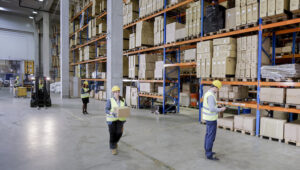
A business’s first priority is usually to ensure profits so everyone involved can have job security long term. But sometimes it costs money to make money. The smartest businesses invest in safety precautions to avoid dangerous pitfalls down the line that could bring on financial struggles.
This boosts your business’s reputation and saves you money in the long term by avoiding lawsuits and operational disruptions. There are several simple ways to ensure a safe place of business for you, your employees, and your customers.
- Provide Training
Before opening your doors, provide all necessary training to employees before trusting the business to them. It’s important to make sure everyone is trained in what to do when things go wrong. You never know when there’ll be an emergency that needs a quick, orderly evacuation or a customer on-site gets injured and requires immediate first aid.
At all times, someone on-site should be trained in cardiopulmonary resuscitation (CPR) and basic medical aid; the more people trained, the better. A few minutes can make the difference in saving someone’s life, so waiting for the ambulance may not always be an option. Offering complimentary CPR training from an expert is a great way to keep employees safe and informed.
- Have the Right Equipment
Training is only part of the safety process. Sometimes you’ll need a specific piece of equipment to defuse a crisis or save a life. The most important pieces of equipment you’ll need are a fire extinguisher and a first-aid kit. Having a fire extinguisher and knowing how to use it properly can prevent a small fire from totaling a business and give everyone the chance to get out safely.
A first-aid kit usually doesn’t save a life on its own the way CPR can, but it can stop bleeding or alleviate the pain of an injury while waiting for medical assistance. You’ll also want some preventative gear on hand, like caution signs when you need to fence off an area due to a spill. If all goes well, you won’t need these items, but having them can be a lifesaver in an emergency.
- Risk Avoidance Strategies
No business is without risk. Decide how you want to handle the risks associated with your business before you open. Do you want to go for risk avoidance or risk reduction? Risk reduction looks at how to mitigate potential losses while working in risky areas. In contrast, risk avoidance analyzes what situations are the most likely to cause losses and tries to cut them out of the business model.
It’s impossible to avoid all risks, especially if you’re working in an in-person store and interacting with customers regularly. However, risk avoidance strategies can help you look at what areas of your business are most likely to result in accidents or liabilities. A few simple changes to your business model can go a long way in eliminating risk.
- Maintain
Many businesses make the critical mistake of taking safety precautions before they open and then letting things lapse. It’s important to keep up on potential safety pitfalls as you operate and stop them before they become a serious issue. Often a structural flaw can be brewing for a long time before it becomes obvious. But when it becomes obvious, it’s a disaster.
You’ll want to schedule maintenance visits regularly from specialists who can handle complex systems. Your best asset for keeping your business safe may be your employees, who are on the floor regularly and can notice problems early. Be sure to ask for their feedback when doing the next safety inspection.
- Allow for Breaks
It’s not just the building that can be a safety hazard if not maintained properly; it’s also the employees. We’re all human, and humans need time to rest and recharge. That means that the treasured employee break time isn’t just a perk; it’s a necessity.
Allow for consistent breaks during shifts to keep employees fresh, allow them to take care of any business, and recharge for the next part of the day. Having a designated break area can prevent customers from interfering with employee breaks. Be sure they have enough time to eat a full meal during this time.
Safety First
You never know when a safety issue will pop up until it makes itself known most inconveniently. That’s why an ounce of prevention is worth a pound of cure. By keeping your business safe and maintained, you’ll protect employees, customers, and your investment.



